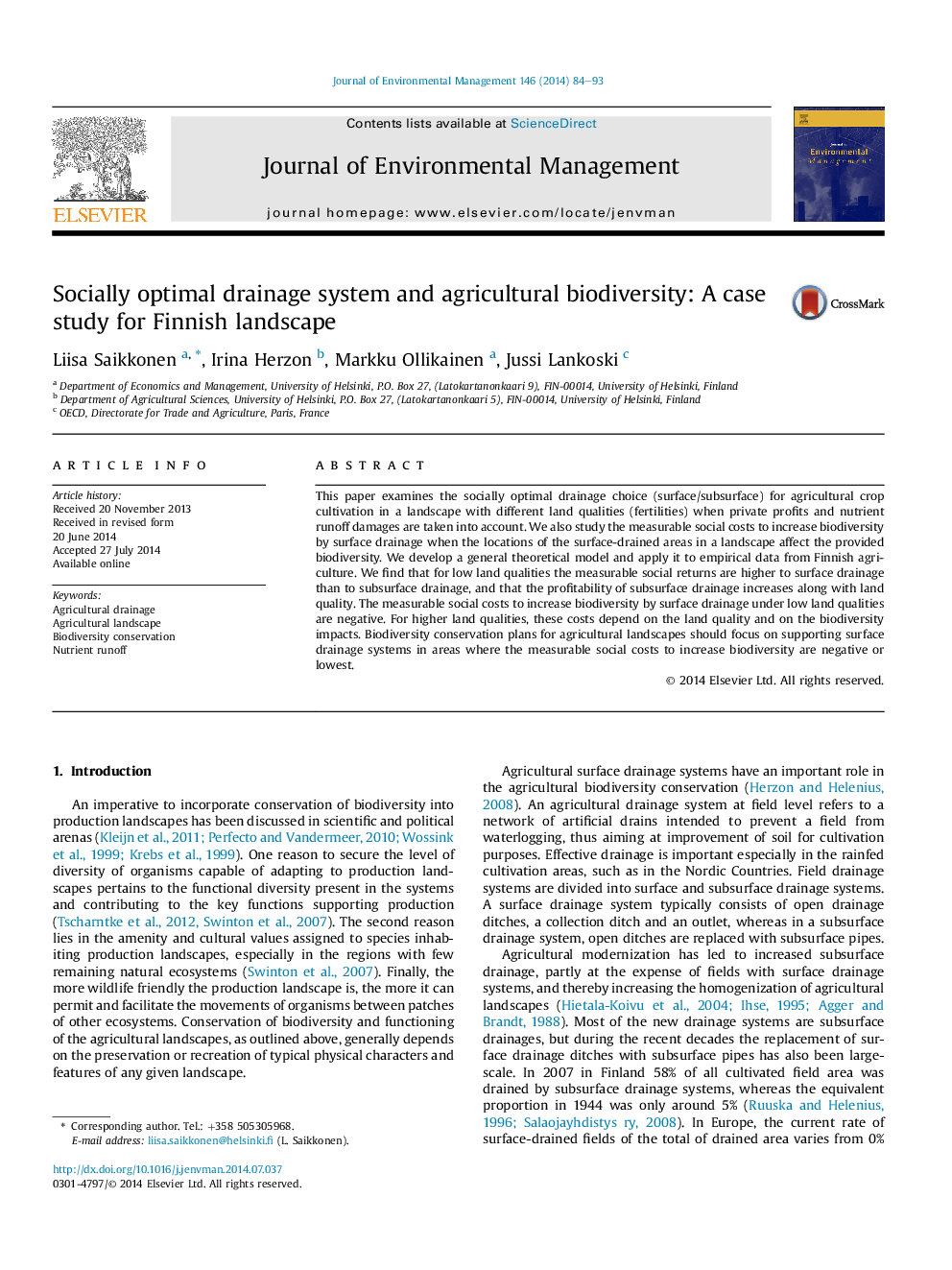| Article ID | Journal | Published Year | Pages | File Type |
|---|---|---|---|---|
| 7483356 | Journal of Environmental Management | 2014 | 10 Pages |
Abstract
This paper examines the socially optimal drainage choice (surface/subsurface) for agricultural crop cultivation in a landscape with different land qualities (fertilities) when private profits and nutrient runoff damages are taken into account. We also study the measurable social costs to increase biodiversity by surface drainage when the locations of the surface-drained areas in a landscape affect the provided biodiversity. We develop a general theoretical model and apply it to empirical data from Finnish agriculture. We find that for low land qualities the measurable social returns are higher to surface drainage than to subsurface drainage, and that the profitability of subsurface drainage increases along with land quality. The measurable social costs to increase biodiversity by surface drainage under low land qualities are negative. For higher land qualities, these costs depend on the land quality and on the biodiversity impacts. Biodiversity conservation plans for agricultural landscapes should focus on supporting surface drainage systems in areas where the measurable social costs to increase biodiversity are negative or lowest.
Related Topics
Physical Sciences and Engineering
Energy
Renewable Energy, Sustainability and the Environment
Authors
Liisa Saikkonen, Irina Herzon, Markku Ollikainen, Jussi Lankoski,
